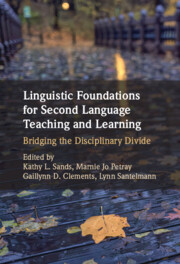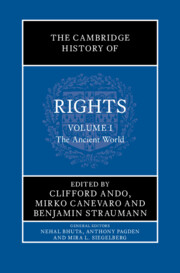Refine listing
Actions for selected content:
1299800 results in Books
Chapter 9 - Comments on Carbon Policy: Panel Discussion
- from Part V - Policy Session: Climate Change
-
-
- Book:
- Advances in Economics and Econometrics
- Published online:
- 11 November 2025
- Print publication:
- 31 January 2026, pp 283-291
-
- Chapter
- Export citation
List of Figures and Table
-
- Book:
- Between Empire and Nation
- Published online:
- 15 December 2025
- Print publication:
- 31 January 2026, pp xi-xii
-
- Chapter
-
- You have access
- Open access
- Export citation
Notes
-
- Book:
- The Indian Ocean and the Historical Imagination in Afro-Asian Fiction
- Published online:
- 19 December 2025
- Print publication:
- 31 January 2026, pp 211-236
-
- Chapter
- Export citation
5 - Finality and Enforcement of Arbitral Awards
-
- Book:
- International Arbitration and India
- Published online:
- 16 December 2025
- Print publication:
- 31 January 2026, pp 126-166
-
- Chapter
- Export citation
8 - Donor Darling
- from Part II - Delivery
-
- Book:
- Charity After Empire
- Published online:
- 18 December 2025
- Print publication:
- 31 January 2026, pp 229-252
-
- Chapter
- Export citation
Part I - Growth
-
- Book:
- Charity After Empire
- Published online:
- 18 December 2025
- Print publication:
- 31 January 2026, pp 27-136
-
- Chapter
- Export citation
Part II - Anti-imperial Solidarity and Relief in the 1930s
-
- Book:
- Between Empire and Nation
- Published online:
- 15 December 2025
- Print publication:
- 31 January 2026, pp 121-122
-
- Chapter
-
- You have access
- Open access
- Export citation
3 - Procedural Rules, Justice and Fairness in Arbitration
-
- Book:
- International Arbitration and India
- Published online:
- 16 December 2025
- Print publication:
- 31 January 2026, pp 79-104
-
- Chapter
- Export citation
8 - Harmonisation of Arbitration Law: Process and Perspectives
-
- Book:
- International Arbitration and India
- Published online:
- 16 December 2025
- Print publication:
- 31 January 2026, pp 259-283
-
- Chapter
- Export citation
12 - The Role of Business during the Erosion of Liberal Democracy in Modi’s India
-
-
- Book:
- The Politics of Corporations in ‘New’ India
- Published online:
- 15 December 2025
- Print publication:
- 31 January 2026, pp 301-329
-
- Chapter
- Export citation
2 - The Economic Origins of Hindu Supremacism
-
-
- Book:
- The Politics of Corporations in ‘New’ India
- Published online:
- 15 December 2025
- Print publication:
- 31 January 2026, pp 42-68
-
- Chapter
- Export citation
Dedication
-
- Book:
- The Politics of Corporations in ‘New’ India
- Published online:
- 15 December 2025
- Print publication:
- 31 January 2026, pp v-vi
-
- Chapter
- Export citation

Linguistic Foundations for Second Language Teaching and Learning
- Bridging the Disciplinary Divide
- Coming soon
-
- Expected online publication date:
- January 2026
- Print publication:
- 31 January 2026
-
- Book
- Export citation
Part II - Frontiers of Modern Econometrics
-
- Book:
- Advances in Economics and Econometrics
- Published online:
- 11 November 2025
- Print publication:
- 31 January 2026, pp 47-48
-
- Chapter
- Export citation
Chapter 4 - Place
-
- Book:
- The Indian Ocean and the Historical Imagination in Afro-Asian Fiction
- Published online:
- 19 December 2025
- Print publication:
- 31 January 2026, pp 129-164
-
- Chapter
- Export citation
Apparatus
-
- Book:
- Chance
- Published online:
- 26 December 2025
- Print publication:
- 31 January 2026, pp 479-664
-
- Chapter
- Export citation

The Cambridge History of Rights
- Coming soon
-
- Expected online publication date:
- January 2026
- Print publication:
- 27 November 2025
-
- Book
- Export citation
Part III - Intra-imperial Non-state Relief Work in the Context of the Second World War and Early Decolonisation
-
- Book:
- Between Empire and Nation
- Published online:
- 15 December 2025
- Print publication:
- 31 January 2026, pp 183-184
-
- Chapter
-
- You have access
- Open access
- Export citation
Conclusion
-
- Book:
- Between Empire and Nation
- Published online:
- 15 December 2025
- Print publication:
- 31 January 2026, pp 275-286
-
- Chapter
-
- You have access
- Open access
- Export citation
Contents
-
- Book:
- Between Empire and Nation
- Published online:
- 15 December 2025
- Print publication:
- 31 January 2026, pp ix-x
-
- Chapter
-
- You have access
- Open access
- Export citation
